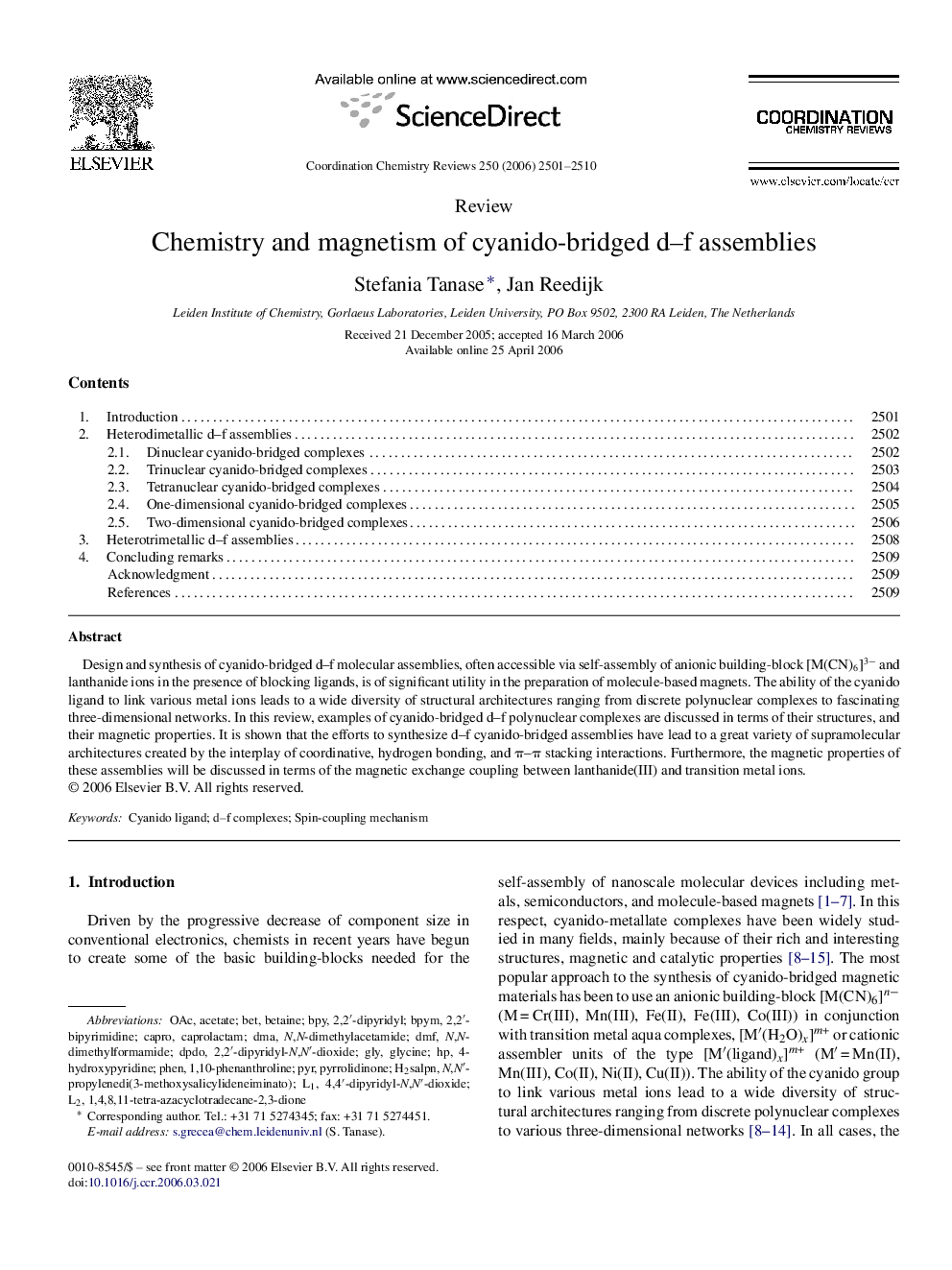| Article ID | Journal | Published Year | Pages | File Type |
|---|---|---|---|---|
| 1299553 | Coordination Chemistry Reviews | 2006 | 10 Pages |
Design and synthesis of cyanido-bridged d–f molecular assemblies, often accessible via self-assembly of anionic building-block [M(CN)6]3− and lanthanide ions in the presence of blocking ligands, is of significant utility in the preparation of molecule-based magnets. The ability of the cyanido ligand to link various metal ions leads to a wide diversity of structural architectures ranging from discrete polynuclear complexes to fascinating three-dimensional networks. In this review, examples of cyanido-bridged d–f polynuclear complexes are discussed in terms of their structures, and their magnetic properties. It is shown that the efforts to synthesize d–f cyanido-bridged assemblies have lead to a great variety of supramolecular architectures created by the interplay of coordinative, hydrogen bonding, and π–π stacking interactions. Furthermore, the magnetic properties of these assemblies will be discussed in terms of the magnetic exchange coupling between lanthanide(III) and transition metal ions.
